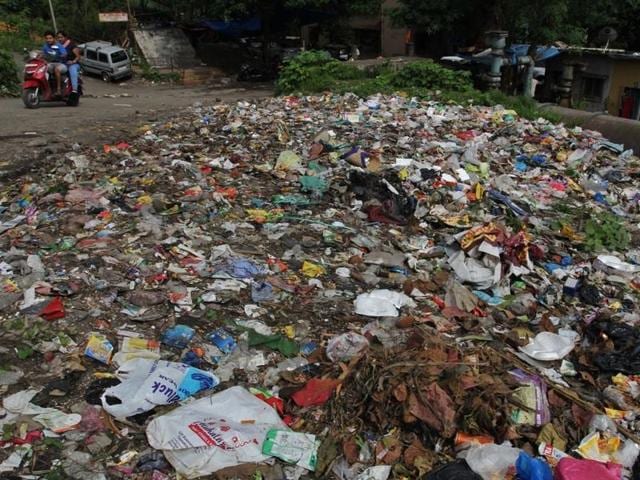Garbage disposal mess: Mumbai doubles trash output in 30 yrs
Rising incomes and consumption patterns across the city have meant an individual today disposes an average 500g of waste every day as compared to the average 250g in the 1980s
The amount of trash generated by an average Mumbaiite has doubled in the past three decades, which explains the pressure on the city’s limited waste segregation system.

Rising incomes and consumption patterns across the city have meant an individual today disposes an average 500g of waste every day as compared to the average 250g in the 1980s. Of the 24 municipal wards, those generating 700g of waste per capita per day has almost tripled – from 10% in 1981 to 29% in 2015. Similarly, 25% wards today throw 1kg waste per person per day as against 16% in 1981.
And with increasing income and disposal items on sale, environmentalists said the city’s trash problem will only grow. Reducing consumption and segregation of waste at source, be it in homes or commercial establishments, are important as the city is running out of dumping grounds.
A large proportion of this waste comes from the more affluent parts of south Mumbai, which makes up 29% of the city’s population, but generates 40% of the total solid waste that goes to the dumping yard. Suburban Mumbai, home to 71% of the population, accounts for 60% of the solid waste.
“In the 1980s, people moved from the city to the suburbs and beyond city limits,” said Debajit N Sarkar, principal, JM Patel College of Commerce, Goregaon, who did the study. “Even though the older part of the city occupies less geographical area and population today, the concentration of large hotels, markets and other commercial activities coupled with high to very high income groups here is responsible for huge quantities of waste.”
Every day for the past thirty years, for instance, civic ward A, comprising areas of Cuffe Parade, Colaba, Marine Drive and Nariman Point, continues to top the list for generating the highest amount of waste per capita – from 1.4kg waste per person per day in 1981 to 1.9kg waste in 2015.
However, waste per capita per day from civic wards F/South and G/North – Lalbaug, Parel, Dadar, Sion, Sewri, Wadala – that have seen an increase in residential and commercial complexes has doubled from less than 500g in 1981 to about 1.2kg in 2015.
Similarly, a rise in the number of residents with high and disposable incomes in the suburbs, coupled with opening of restaurants, malls and multiplexes, has resulted in an increase in per capita waste every day. So trash generated by people living in wards H and L (both east and west), which cover Bandra, Santacruz, Juhu, Oshiwara, Chandivali, Sakinaka, Kurla, parts of Sion and Powai, increased from about 300g to 900g per day.
“Per capita waste per day is more in city wards. Ward A in terms of waste per capita per day is conspicuous, but the least waste is generated in ward S [Vikhroli, Bhandup and Kanjurmarg]. This reconfirms the fact that generation of waste hinges on population and income,” said Sarkar.
Therefore, even with less population than 30 years ago, municipal wards in the island city continue to generate as much or more garbage as their suburban counterparts to Mumbai’s three dumping yards every year. Mumbai generates 9,600 metric tonnes of waste every day.
With a population of 2 lakh in 2015, ward A (Cuffe Parade, Colaba, Marine Drive and Nariman Point) generates about 1.54 tonnes of municipal solid waste every year – the same amount that ward P/North (part of Malad, Malwani, Marve, Dindoshi) with four times the population generates annually.
Similarly, ward C (Marine Lines, Bhuleshwar, Mumbadevi, Chandanwadi, Chira Bazaar), with a population of three lakh, generates about 90 tonnes of waste annually. The same amount of waste is disposed by ward R/South (Kandivli west and east) that is home to more than eight lakh Mumbaiites.
“There are technologies to reuse and recycle. But we first need to reduce, and that can happen only we start being sensitive about the environment; know that a tree may need to be cut to make parking space for cars or that precious natural resources are being used to manufacture products,” said Monisha Narke, R U Reducing, Reusing Recycling. “Segregation is also key to managing waste efficiently.”
Stay updated with all the Breaking News and Latest News from Mumbai. Click here for comprehensive coverage of top Cities including Bengaluru, Delhi, Hyderabad, and more across India along with Stay informed on the latest happenings in World News.
Stay updated with all the Breaking News and Latest News from Mumbai. Click here for comprehensive coverage of top Cities including Bengaluru, Delhi, Hyderabad, and more across India along with Stay informed on the latest happenings in World News.





